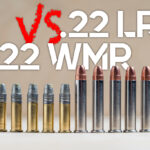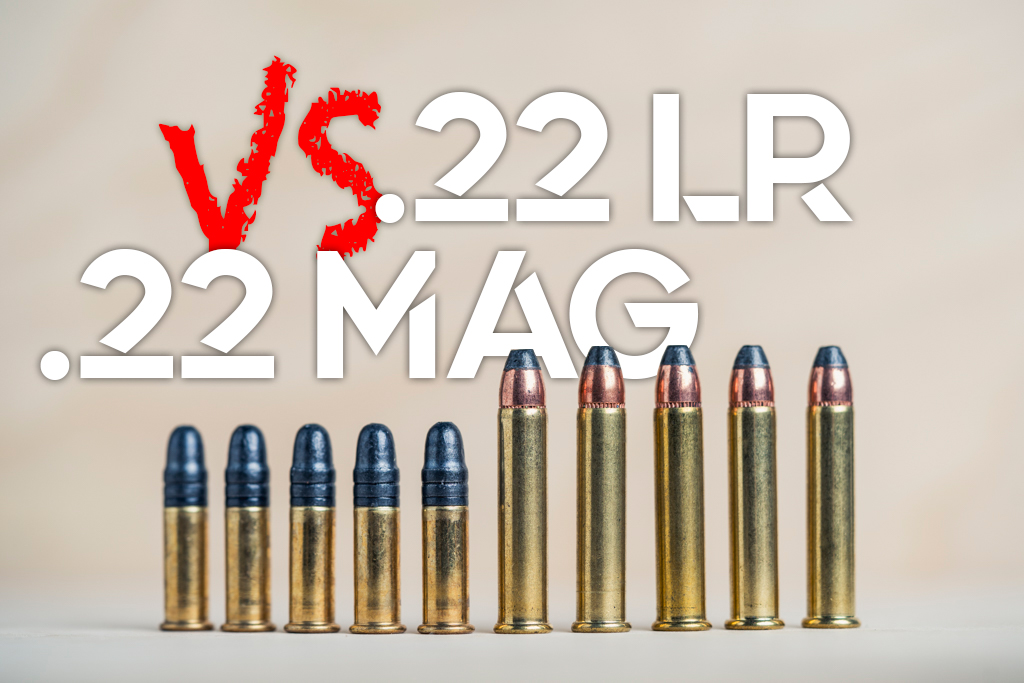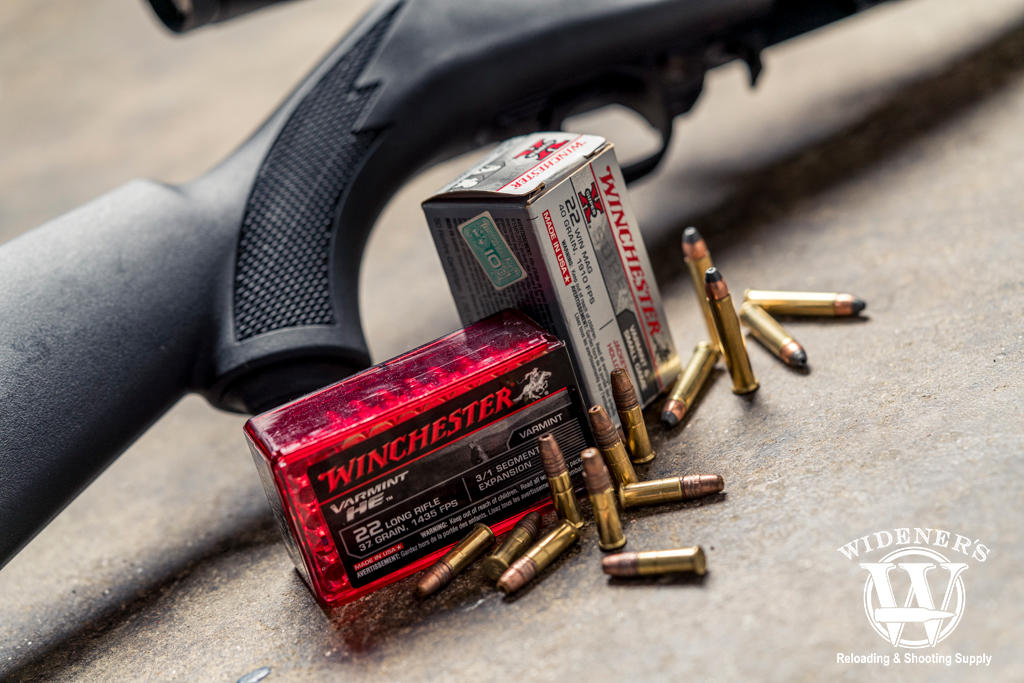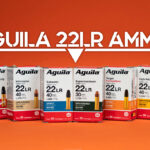

In the world of rimfire cartridges, the .22 caliber reigns supreme, offering shooters a diverse array of options for various purposes. Among these, the .22 LR (Long Rifle) and .22 Magnum (WMR) are popular choices. Despite their similar origins, 22LR VS 22 Mag have distinct characteristics that cater to different shooting needs.
On a side note, the .22 Magnum and .22 WMR are the same. WMR stands for Winchester Magnum Rimfire. Some other common names for the .22 Magnum cartridge are .22 MRF (magnum rimfire) and .22 Mag. These terms refer to the same cartridge; we will use some variations below.
22LR VS 22 Mag
Let’s say you can only choose one. The obvious answer is the .22LR cartridge. It’s cheaper, easier to find, and has more than 100 years of compatible gun models. It lags behind the .22 Magnum in size, velocity, and energy. However, with an effective range of 100-150 yards, it can still get the job done with efficiency.
This blog article will delve into the history, practical uses, bullet types, and ballistics of 22LR VS 22 Mag ammo, helping you understand which suits your preferences.
A Brief History
We can trace the roots of the .22 LR back to the late 19th century. The .22 LR, developed by J. Stevens Arms and Tool Company in 1887, was designed to offer a more powerful alternative to the earlier .22 Long cartridge. This became one of the most widely used rimfire cartridges for various applications, including plinking, target shooting, and small game hunting.
The .22 Magnum, on the other hand, emerged later in 1959, thanks to Winchester’s efforts to create a higher-powered rimfire cartridge. The result is a longer and more powerful cartridge that found its place in both revolvers and rifles.
| Cartridge Specs | .22 Long Rifle | .22 Win Mag |
|---|---|---|
| Parent Casing | .22 Long | .22 Win Rimfire |
| Bullet Diameter | .223“ | .224“ |
| Neck Diameter | .226″ | .243″ |
| Base Diameter | .226″ | .245″ |
| Case Length | .613″ | 1.05″ |
| Overall Length | .888″ | 1.35″ |
| Grain Weight | 29gr-60gr | 30gr-50gr |
| Max Pressure (SAMMI) | 24,000 PSI | 24,000 PSI |
Practical Uses: 22LR VS 22 Mag

Not Compatible: Even though 22LR VS 22 Mag are both rimfire cartridges, you can’t safely fire them from the same gun.
Both the .22 LR and .22 Magnum have earned their spots in the shooting community for different purposes.
The .22LR cartridge is often considered the go-to choice for beginners and recreational shooters due to its low recoil, affordability, and widespread availability. It’s perfect for plinking, target practice, and introducing newcomers to shooting sports. Its lightweight nature also makes it suitable for varmint hunting and controlling pests around farms.
One of the biggest appeals of the .22LR cartridge is its cost. Even though ammo prices have soared recently, the .22LR has remained highly affordable. If you find yourself itching to get in some extra range time but don’t want to fork over the cash for larger cartridges, get a rifle chambered in .22LR and shoot from sun up until sundown.
The .22 Magnum, while slightly more expensive, offers increased power and range compared to the .22 LR. It’s favored by those who require more stopping power for small-game hunting or varmint control at longer distances. Additionally, the .22 Magnum is an excellent option for self-defense due to its increased energy and penetration capabilities.
On that note, dozens of rifles and handguns are chambered in both calibers, which means you won’t be limited in your choice of weapons systems regardless of which cartridge you choose.
Bullet Types

The copper-plated hollow point bullet is a popular choice for rimfire caliber hunters.
Both cartridges offer a variety of bullet types tailored to different shooting scenarios:
- .22 LR: The .22 LR ammunition comes in various bullet designs, including round-nose, hollow-point, and segmented hollow-point. Round-nose bullets are suitable for general shooting and target practice, while hollow points are designed for better expansion and energy transfer, making them effective for small-game hunting.
- .22 Magnum: .22 Magnum ammo also features bullet options like jacketed hollow points for enhanced terminal performance, making them an excellent choice for hunting. The increased velocity of the .22 Magnum allows these bullets to maintain better accuracy and energy retention over longer distances.
Ballistics
When comparing the ballistics of .22 LR and .22 Magnum, the differences become more pronounced:
- .22 LR: The .22 LR typically fires bullets at velocities between 1,000 and 1,200 feet per second (fps) and generates muzzle energies ranging from 100 to 150 foot-pounds. This relatively lower power limits its effective range, making it more suitable for close to medium-range shooting.
- .22 Magnum: The .22 Magnum achieves significantly higher velocities, often exceeding 2,000 fps, and delivers muzzle energies upwards of 300 foot-pounds. This increased power translates to better accuracy and energy retention at longer distances, making it a preferred choice for varmint hunting and self-defense scenarios.
However, both cartridges have one major limitation in terms of ballistic performance: their weight. To calculate the momentum of a projectile, you must multiply its mass by its velocity. Since the .22 LR and .22 magnum typically weigh between 36 and 40 grains, they don’t have as much “stopping power” as larger rounds.
The .22 class of ammunition is best for target shooting, plinking, and varmint hunting, as opposed to self-defense. That said, carrying a weapon chambered in .22 is undoubtedly better than entering a self-defense scenario empty-handed.
| Caliber | Bullet Type | Bullet Weight | Velocity (Muzzle) | Energy (Muzzle) | 50 Yards (Velocity/Energy) | 100 Yards (Velocity/Energy) | 150 Yards (Velocity/Energy) |
|---|---|---|---|---|---|---|---|
| .22LR | LRN | 40gr | 1,200 FPS | 128 FT LBS | 1,075 FPS/103 FT LBS | 991 FPS/87 FT LBS | 928 FPS/76 FT LBS |
| .22 Win Mag | FMJ | 40gr | 1,880 FPS | 314 FT LBS | 1,570 FPS/219 FT LBS | 1,311 FPS/153 FT LBS | 1,121 FPS/150 FT LBS |
22LR VS 22 Mag: Final Thoughts

22LR VS 22 Mag: The .22LR cartridge is more cost-effective, but lacks the speed and power of the .22 Magnum.
In the world of rimfire ammunition, the 22LR VS 22 Mag cartridges each have their own strengths and purposes. The .22 LR is a versatile and affordable option, perfect for plinking, target practice, and entry-level shooting experiences. The .22 Magnum offers more power, longer range, and better performance for small game hunting and self-defense. The choice between these two cartridges depends on your specific needs and preferences.
Whether you’re a casual shooter or a seasoned hunter pursuing varmints, understanding the history, practical uses, bullet types, and ballistics of .22 LR and .22 Magnum ammo will help you make the best decision. The .22 caliber’s enduring popularity ensures that both these cartridges will continue to play an essential role in the shooting world for years to come.


